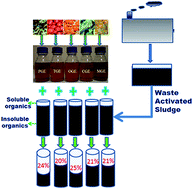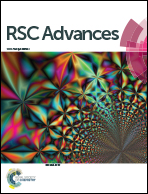Solubilization of waste activated sludge using a garbage enzyme produced from different pre-consumer organic waste
Abstract
The conversion of pre-consumer solid waste into value added products, and utilisation of this for the treatment of activated sludge into a reusable form without having toxic effects on the environment, is much more in focus in the present day. In the present work, different types of garbage enzyme were produced from pre-consumer waste (pineapple, cauliflower, orange, tomato, and mango dregs) and the characteristics of each garbage enzyme produced were investigated. Sludge solubilization was performed with different types of garbage enzyme at different pH and time. When the treatment time increased from 48–60 hours, a higher reduction of VSS (Volatile Suspended Solids), TSS (Total Suspended Solids) and also a higher increase of the solubility of COD (Chemical Oxygen Demand), TKN (Total Kjeldhal Nitrogen) and TP (Total Phosphorus) were obtained for all types of garbage enzyme at pH 7. The pineapple and orange garbage enzyme showed a higher reduction % of VSS and TSS of nearly 20–25% and also increased % solubilization of COD, TKN and TP by nearly 20–25%, 15–20% and 9–11% respectively in treated WAS (Waste Activated Sludge) compared with other garbage enzymes. This significant result showed that a garbage enzyme solution has the capability to solubilize complex (insoluble organic) compounds to soluble organic compounds, which can be subsequently treated by anaerobic microbes to produce methane or hydrogen.


 Please wait while we load your content...
Please wait while we load your content...